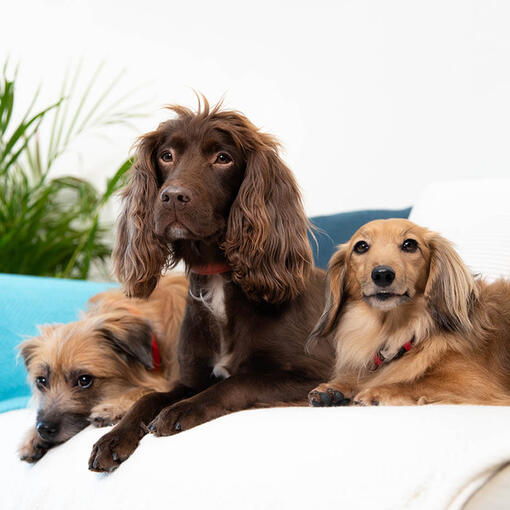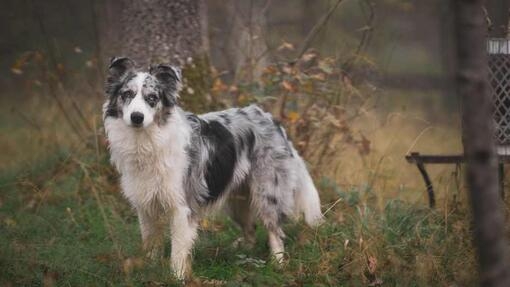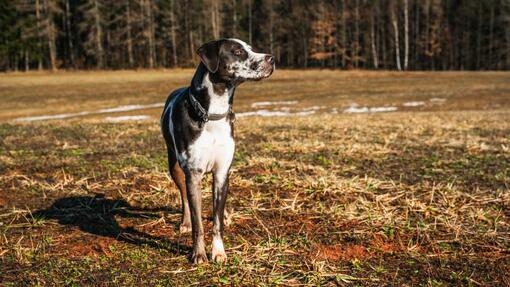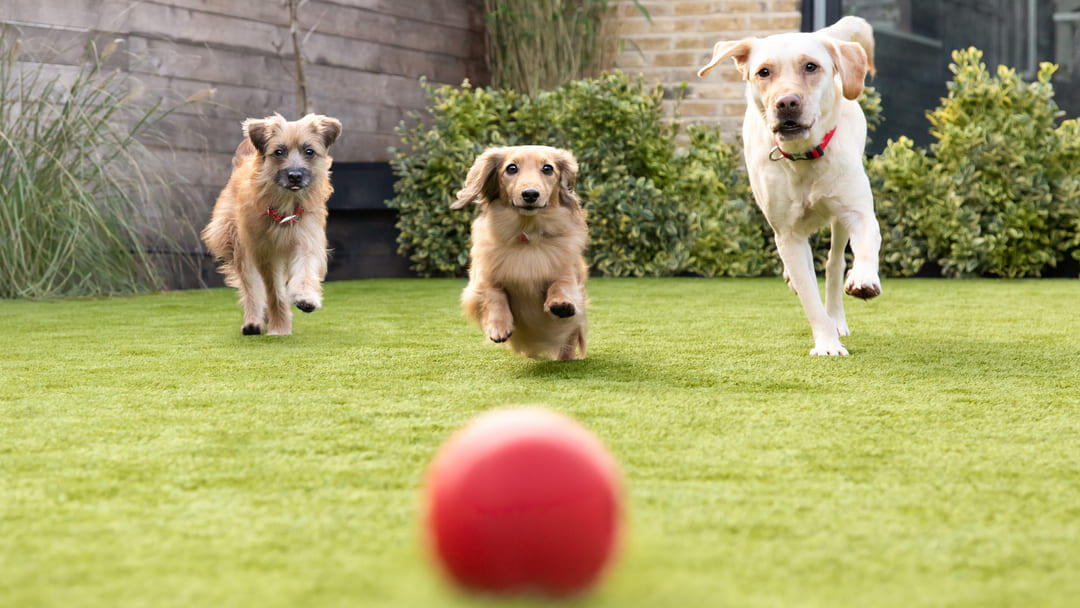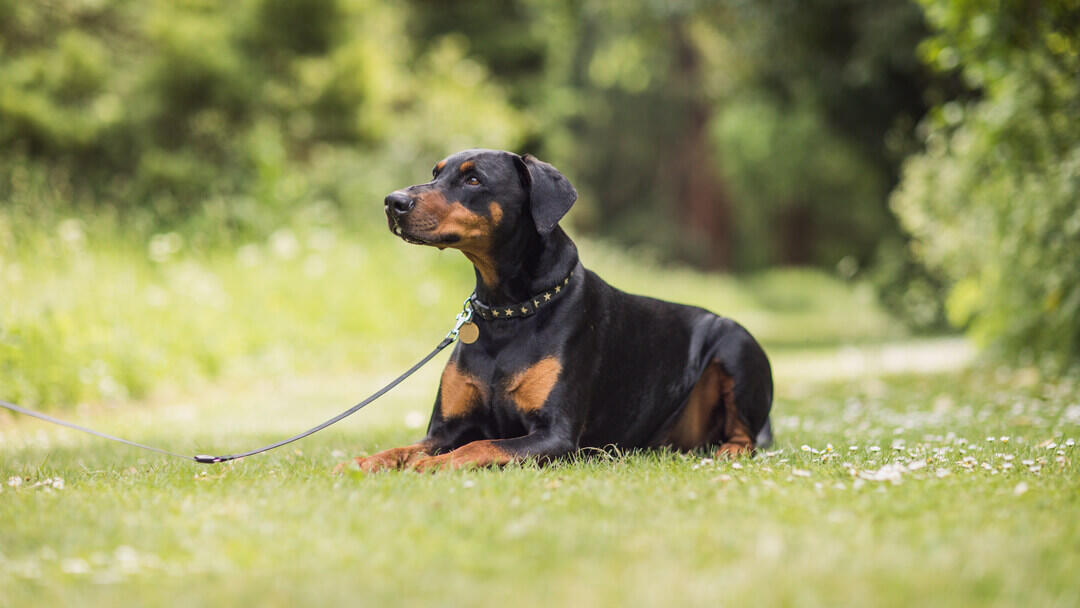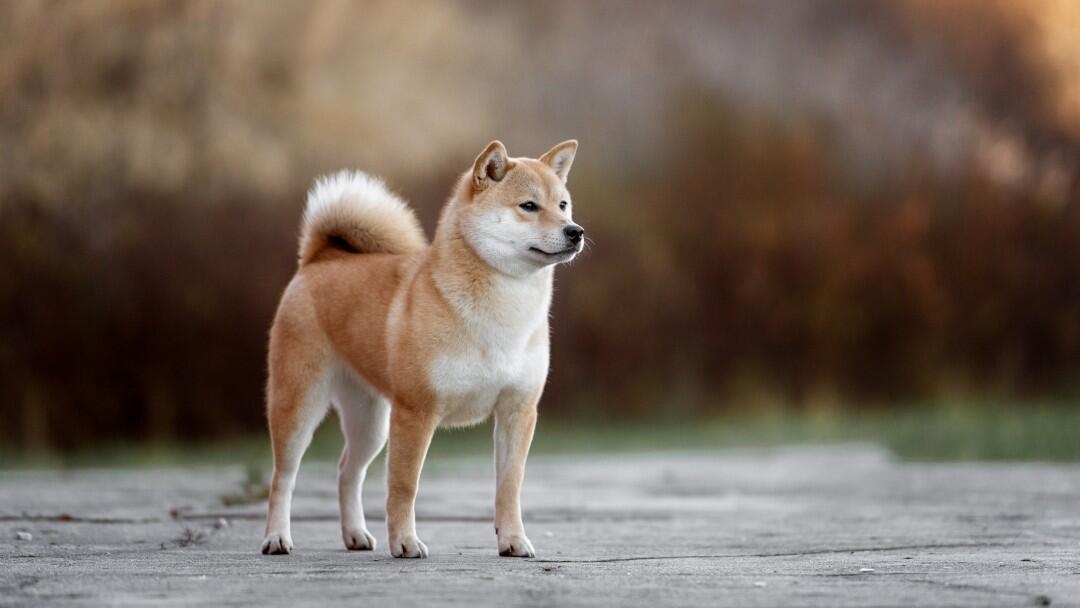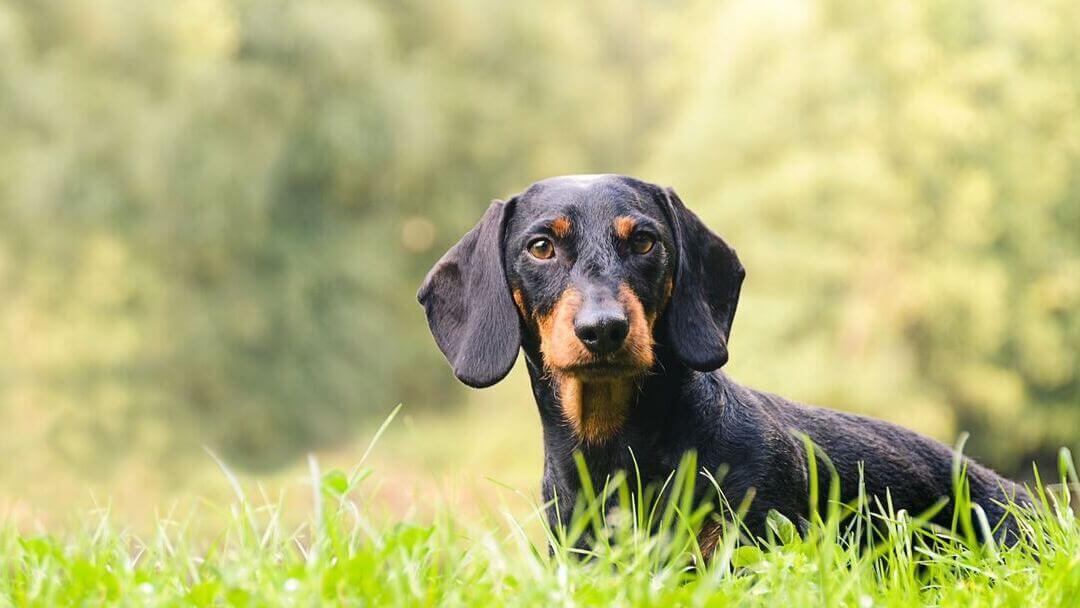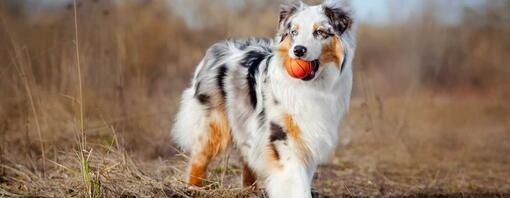
Merle dogs are super cute, but do you know which breeds are in this group? We’ve got them all listed below, along with other merle dog facts and potential health conditions that you should be aware of. Keep reading to discover lots about some of the most amazing pooches out there.
What makes a dog a merle?
Merle refers to a dog’s coat pattern. Merle dogs have mottled patches of colour in a solid or piebald coat. They could have a patched skin colour on their nose and/or paw pads, and blue (or possibly odd-coloured) eyes. This is caused by inherited genes from one or both parents.
Merle is also known as dapple in some breeds, like Dachshunds. Merle dogs can come in a range of coat colours, but the pattern is usually patches of darker shades, marbled against lighter backgrounds. The size of these patches can vary from dog to dog.
Are merle dogs unhealthy?
Merle dogs with one merle parent have similar life expectancies as their solid-coloured friends. However, if a merle dog has two merle parents, there is an increased risk of some health issues, mainly to do with eyes and ears which can potentially lead to dog blindness and/or deafness in dogs.
Double merle dogs
As well as developing blindness and deafness in later life, double merle puppies can be born with health defects, like microphthalmia. This is where the eyes of the merle dog are a lot smaller and do not form properly. Some double merle dogs are also at increased risk of sun burn and dog skin cancer. Note that it’s widely regarded as unethical to breed two merle dogs.
Although merle dogs are generally healthy and can have healthy offspring (again, so long as two merle dogs are not breeding), it’s important to be aware of this risk. If you’re concerned, always contact your vet.
Before you get yourself a merle dog breed, ensure the breeder is trustworthy or that you have the correct and accurate information from a dog adoption agency.
Do all merle dogs have blue eyes?
As we mentioned, merle dogs can have blue eyes and this is quite common. However, this isn’t always the case and a dog can be merle with brown eyes. Some merle dogs will even have one blue eye and one brown eye!
How is merle inherited in dogs?
Merle is a variant of a specific gene. Dogs will always get one gene from each parent but as the merle gene is dominant, only one parent needs to carry it in order for a dog to display merle characteristics. This gene can come from either their mother or father.
13 merle dog breeds you should know about
The merle gene is more common in some breeds than others. You can find dogs outside of the following list that have merle characteristics, but these are likely to be crossbreeds.
Take a look at our list below to discover some of the most amazing merle pups out there.
Australian Shepherd
Australian Shepherds come in a few different merle coat patterns. Blue merles have black patches against a grey-toned background and red merles have red patches on a beige coat.
Their coats are usually of medium length and are straight or wavy. Their top coat is water resistant and their undercoat helps them to regulate their body temperature.
In terms of shedding, they shed a lot and even more during the spring to get rid of their winter coat. They also require regular brushing to prevent matting.
Border Collie
Border Collies with the merle dog gene have white coats with darker patches on them, and these darker patches have the characteristic merle pattern.
Border Collie’s coats can be quite long which means that when they moult, there can be quite a lot of hair about!
They often moult more in autumn and spring, and because of this, they need to be groomed more regularly during these times. Outside of these seasons, they still need grooming, but you may not need to do it quite so frequently.
Australian Koolie
Australian Koolie merle dogs usually have red or black merle patterns on their coat. These colour combinations can also occur together on a white background.
Their coat sheds an average amount and they are easy to groom. A firm bristle brush occasionally and a bath when necessary is usually all they need.
Great Dane
A Great Dane’s merle pattern is a pale or dark grey coat that’s covered in darker patches. Some merle Great Danes don’t have a high contrast between their coat’s background colour and the patches.
Great Danes only have single coats but they are medium to heavy shedders. However, as their hair is short, it is relatively easy to manage. They do need regular grooming (weekly to every 6 weeks, depending on their activity level) to maintain a healthy coat.
Dachshund
The Dachshund’s merle (or dapple) pattern can come in a range of colours and can also be double dappled (in other words, splotches that are two colours). They will have the standard lighter background and darker spots.
In terms of shedding, Dachshund’s don’t tend to shed much. A smooth-haired Dachshund should be groomed gently 1-2 times per week with a soft bristled brush.
Pyrenean Shepherd
Pyrenean Shepherds come in a regular merle pattern and a blue merle pattern.
These dogs do shed, and the hair will often come out in clumps when rubbed or scratched. Regular, frequent grooming is needed.
Welsh Sheepdog
Welsh Sheepdogs possess a lighter coat with dark splotches across their body and face.
They occasionally shed and require weekly brushing to keep them clean and healthy (though they might be a bit impatient whilst this is going on).
Bergamasco Shepherd
A Bergamasco Shepherd merle dog can be grey/black or fawn with a merle coat pattern. Because their hair is so long, the splotches may not look very splotchy, but they are still merles!
These dogs don’t shed and are naturally a clean dog. Originally bred as a herding dog, their coat naturally forms loose matts for protection. Owing to this unique coat, careful attention needs to be paid to their grooming requirements.
French Bulldog
The common merle dog colours for French Bulldogs include white, tan, red, black, and blue.
A Frenchie will shed a little bit, but will shed more in spring and summer. As their hair is fine, it needs the occasional gentle brushing every 6-8 weeks using a rubber grooming mitt.
Catahoula Leopard Dog
Rare in the UK, Catahoula Leopard Dogs can come in a range of merle coat patterns. They can have a lighter brown, grey or white background with darker colour splotches.
These pooches shed an average amount all year round. However, they do require weekly brushing to remove loose hairs.
Shetland Sheepdog
Shetland Sheepdogs can come in a pretty black, sable or blue merle coat pattern. Their splotches can look a little more diluted because their hair is long, but it is definitely noticeable.
Because of their long and dense coats, this breed needs daily brushing to keep tangle free. Regular bathing, roughly every six to eight weeks will help to keep their coat in the best condition.
Rough Collie
A Rough Collie has either a black or brown merle pattern.
Although this breed of collie sheds a lot all year round, this increases further in the spring and autumn (called a blow). It’s important to wipe down their fur and brush them regularly.
Smooth Collie
The Collie (Smooth) can come in a blue merle pattern. This can be white to pale or dark grey, paired with darker patches.
Smooth Collies don’t shed as much as Rough Collies but they still shed a fair bit. These pooches should be brushed once a week.
Now that you know all about merle dog breeds, make sure you find out about the best fun dog names, next!

